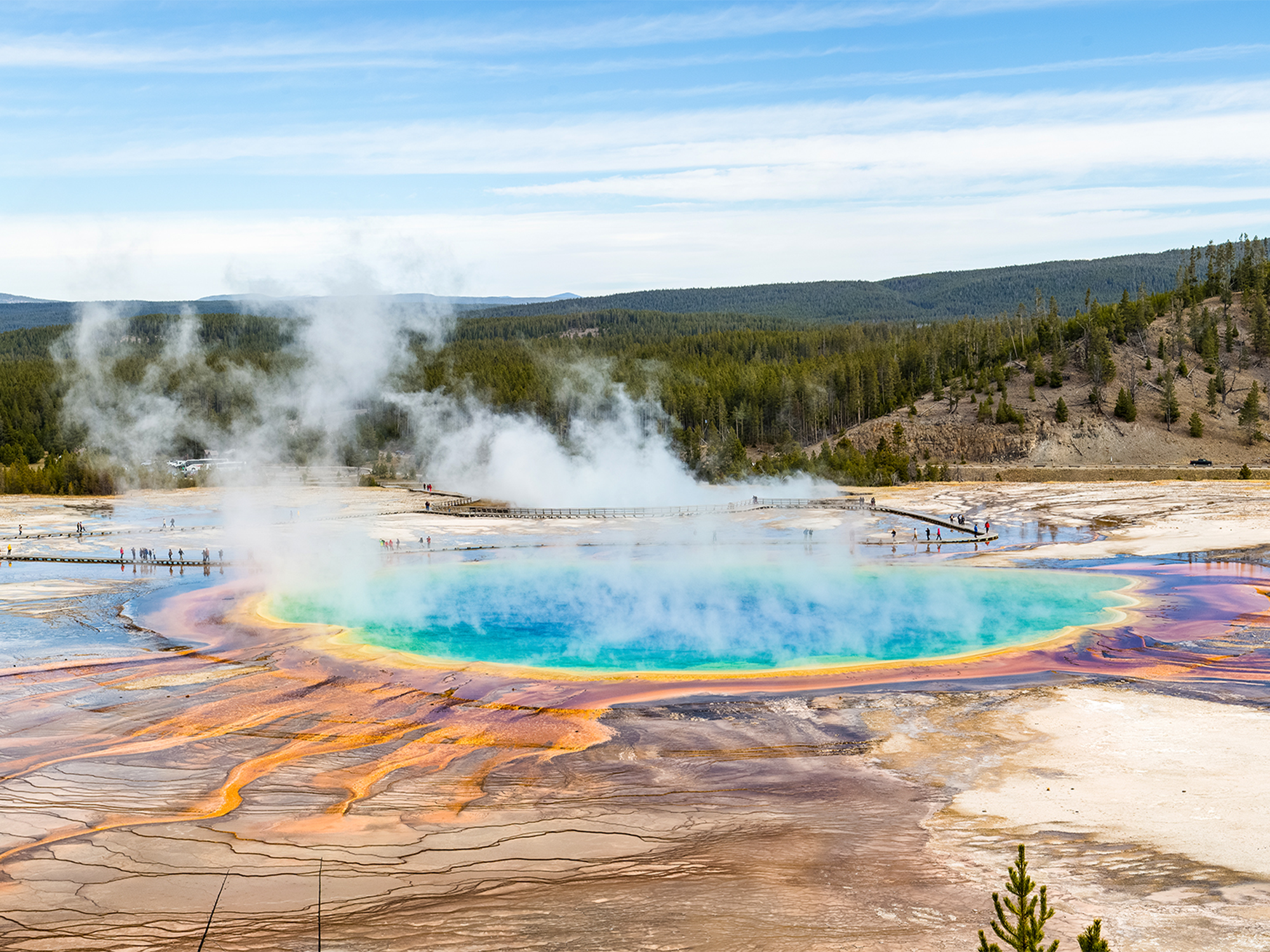

In a corner of Yellowstone National Park in northwestern Wyoming, lies the Yellowstone Caldera, a crater situated over Yellowstone’s super volcano. The volcano has produced three Earth-shattering eruptions over the past 2.1 million years, with the most recent occuring about 640,000 years ago. The caldera is about 30 by 45 miles wide.
Fears of the doomsday scenario of what would happen if this volcano were to erupt in the present day have sparked debate and worry about what is going on beneath the feet of the millions of tourists who visit the park every year. The scientists who study the volcano say we will receive decades worth of warnings that an eruption is about to happen, likely won’t occur for thousands of years, and the volcano is not overdue for an eruption.
[Related: Geologists: We’re not ready for volcanoes.]
While there is no current risk of an eruption, the ground surrounding the ominous spot also seems to have a lot of magma. A new study published yesterday in the journal Science finds that the caldera’s magma reservoir contains more melted rock than scientists once believed and at depths that fueled past eruptions. But do not panic—this doesn’t mean that an eruption will be happening any time soon, according to the study’s authors.
Predicting volcanic eruptions is difficult, partially because it is hard or impossible to really see what is going on beneath a volcano’s surface. One of the key issues for better assessing the hazards of a volcanic eruption is getting a handle on just how much magma is below the surface and where it is located. Since Yellowstone’s magmatic system remains active, questions persist about the volume and distribution of melt (the hot liquid base of the magma) and how that compares with the conditions before eruptions in the past.
These new findings may help scientists improve their models of this volcano to better understand the risk and signs of eruption.
Previous studies have produced images of what the the subsurface below Yellowstone looks like, and show that the magma reservoir is located in the mid to upper crust. However, some recent observations from seismometers in the region show that the degree of partial melt could actually be much higher.
[Related: Volcanic eruptions are incredibly hard to predict. Here’s why.]
Since seismic waves move slower through areas with more melted rock, the team analyzed the seismic data recorded near Yellowstone over the past 20 years to help estimate the proportion of melted rock that is in the shallower magma reservoir. This analysis used supercomputers that modeled the waves in 3D to get a more complete view of the reservoir.
They found that the reservoir has 16 to 20 percent melted rock on average, compared with the older estimate of around nine percent. It’s possible that the reservoir has about 383 cubic miles of melted rock—a great deal larger than the previous estimate of roughly 215 cubic miles.
Kari Cooper, a geochemist and geologist from the University of California, Davis who authored a commentary on the new study, writes that depending on how the magma is distributed, there might be enough for a smaller eruption, but the study shows that there’s currently not enough for a catastrophic eruption. She adds that the study improves our ability to understand what’s going on beneath Yellowstone.
So, we repeat: do not panic.